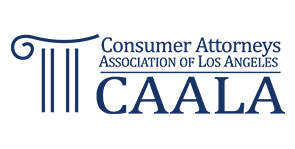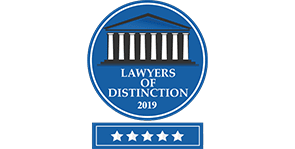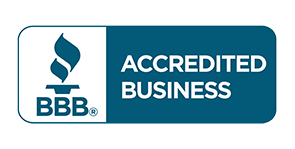Posted On October 31, 2024 California,Car Accidents
Being a passenger in a car accident can be confusing and overwhelming. You weren’t in control of the vehicle, yet you may face serious injuries and unexpected complications.
As a passenger, you have specific rights and legal options under California law to ensure you receive fair compensation for your injuries and any associated expenses.
In this guide, I’ll explain the crucial steps you must take after a car accident as a passenger, and how to protect your rights. Drawing from over 20 years of experience as a personal injury attorney, I’ll walk you through each stage—from seeking medical attention to filing a claim.
Your health should be your priority after a car accident. Even if you don’t feel immediate pain, injuries such as whiplash or concussions may take hours or even days to show symptoms. In California, delaying medical treatment can complicate your ability to recover compensation. Insurance companies often argue that delayed treatment is a sign that your injuries aren’t serious or were caused by something else.
For example, if you felt fine immediately after the accident but woke up the next day with severe neck pain, documenting your condition as soon as possible will help connect it to the accident. Go to an emergency room, urgent care center, chiropractor, or see your primary doctor to get a thorough evaluation.
Ask your medical provider for detailed records of your injuries, including diagnosis, treatment plans, and any recommended follow-ups. These records will serve as crucial evidence when filing a claim against the responsible driver’s insurance or if your case proceeds to court.
If your injuries are not too severe and you’re able to stay at the scene, gather contact information from both drivers. This includes:
As a passenger, it’s essential to collect this information to ensure you have access to the insurance companies involved. In California, you may be able to file claims against multiple parties, including both the driver of the car you were in and the driver of the other vehicle involved. Don’t panic if you were not able to get information at the accident scene. Most of the time, an attorney can track down the information later, but, it’s better to be safe than sorry.
Quick Tip: At the very least, get a picture of the license plates as a good attorney can use this information to track down owners and insurance policies.
Photographs can be powerful evidence when filing a claim. Take pictures of the accident scene, the damage to the vehicles, and any visible injuries you sustained. Also, if there are witnesses, collect their contact information and ask for a brief statement about what they saw.
For example, if you were injured in an accident caused by a driver running a red light, a witness statement could verify this and help establish fault. Anytime there is. Situation where liability could be disputed, it is paramount to get witness statements.
In California, it’s important to report car accidents that result in injuries or significant property damage to the police. Even if the driver has already reported the accident, ensure you follow up to verify that a report was filed.
The police report will provide an official account of the accident, which can be vital if liability is disputed.
As a passenger, you may not think to report the accident to your own insurance company, but doing so is important—especially if you have medical payments (MedPay) coverage, which can help cover some of your medical bills regardless of who was at fault. Additionally, notifying your insurance company ensures that you comply with your policy’s terms, which may be helpful later if you need to file an uninsured or underinsured motorist claim. When neither driver has insurance, you may be able to receive a recovery from you own insurance company as a last resort. It is important to exhaust all potential sources of recovery that might exist.
Passengers in California have the right to file claims for compensation against the at-fault driver. This includes compensation for:
As a passenger, you may file claims against multiple insurance policies. For example, if both drivers share fault for the accident, you can potentially recover compensation from both drivers’ insurance policies.
California follows a “comparative fault” rule, meaning that multiple parties, including both drivers and even passengers, can share responsibility for an accident. However, as a passenger, it’s highly unlikely you would be found at fault. This rule allows you to recover compensation even if one driver was only partially responsible.
For instance, if one driver was 70% responsible for the accident and the other driver 30%, you may file claims with both insurance companies to ensure you recover the full amount of your damages.
Many passengers assume they will automatically receive compensation from one or both drivers, but insurance companies often try to reduce or deny claims. Passengers may face complex situations, such as:
As a personal injury attorney, I’ve seen how quickly a seemingly straightforward case can become complicated, particularly when dealing with insurance companies. Having a lawyer on your side ensures you have an advocate who understands California law and will fight for your best interests.
Insurance adjusters often try to minimize payouts, even to passengers. If an adjuster offers you a settlement quickly, it’s often much lower than what your claim is worth. Consulting an attorney before accepting any offer can prevent you from settling for less than you deserve. We can help negotiate a fair settlement that covers all of your medical expenses, lost wages, pain and suffering and other damages.
As a passenger, you are entitled to various types of compensation. These include:
In California, the statute of limitations for filing a personal injury claim is generally two years from the date of the accident. Missing this deadline means you could lose your right to pursue compensation. It’s crucial to contact an attorney as soon as possible to begin the claims process, especially if liability is contested or if you need to gather additional evidence. If your claim involves a public entity you may have as little as 6 months to file a claim or a statute of limitations might time-bar your claim.
Once you’ve hired an attorney, the first step is filing a claim with the at-fault driver’s insurance company. Your attorney will gather evidence, including police reports, medical records, and any witness statements, to build a strong case on your behalf.
Most car accident cases settle out of court. Your attorney will negotiate with the insurance company to secure a fair settlement. It’s important to remember that insurance companies may try to offer less than what your claim is worth, which is why having an experienced lawyer on your side is critical. Attorneys experience
If negotiations don’t lead to a fair settlement, your case may go to trial. At trial, your attorney will present evidence, call witnesses, and argue your case before a judge or jury. While most cases don’t reach this stage, having a lawyer prepared to take your case to trial ensures the insurance company takes your claim seriously.
If you’ve been a passenger in a car accident in California, you have legal rights and options to pursue compensation. Your health should always come first, followed by gathering evidence, reporting the accident, and understanding your rights under the law. Consulting an experienced personal injury attorney ensures you have the best chance of recovering the compensation you deserve. If you’ve been injured, don’t hesitate to contact us for a free consultation to discuss your case and learn more about your options. Remember, you don’t have to go through this process alone.
Disclaimer:
The content provided on this blog is for general informational purposes only and does not constitute formal legal advice. While we strive to ensure the accuracy and timeliness of the information presented, we make no guarantees. The information provided here should not be relied upon as a substitute for professional legal advice tailored to your specific circumstances.
Your use of this blog and any information contained herein does not create an attorney-client relationship between you and our firm. For advice regarding your individual situation, please contact our office as we would be happy to discuss your case. We expressly disclaim all liability with respect to actions taken or not taken based on any or all the contents of this blog.









© 2022 MONTGOMERY STEELE LAW | ALL RIGHTS RESERVED | disclaimer

